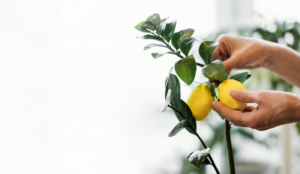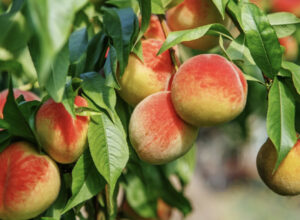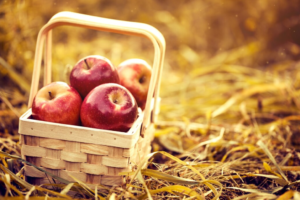Bonsai Tree: The Subtleties of Proper Cultivation

The cultivation and maintenance of bonsai trees is an ancient art form that offers not just an aesthetic experience, but also an immersion into the world of botanical nurturing. This guide delves deep into the essential techniques and practices needed for successful bonsai care.
Understanding Bonsai Needs and Nurturing
Bonsai cultivation is an ancient art that hinges not just on skills but also on a profound understanding of the tree’s needs. The term “bonsai” itself translates to “planted in a container” in Japanese. But the practice goes beyond just placing a tree in a pot. It’s about capturing the essence of nature in miniature, requiring a harmonious balance between the aesthetic and the biological. Understanding and nurturing your bonsai effectively ensures it doesn’t just survive, but thrives, reflecting nature’s beauty in your living space.
- Grasping the Bonsai’s Nature:
Each bonsai species has its unique set of needs. An essential first step is identifying your bonsai species. Is it a juniper or a ficus? A maple or a pine? Recognizing its nature will guide you on its sunlight preferences, watering frequency, and dormancy periods.
- Recognizing Growth Phases:
Just like all plants, bonsai trees go through different growth stages. They might require more sunlight, water, or nutrients during their active growth phase and less during their dormant periods. By recognizing and respecting these phases, you ensure the tree gets precisely what it needs at different times of the year.
- Substrate Significance:
The soil or substrate used for bonsai is fundamental. It provides the roots with necessary nutrients, anchors the tree, and facilitates water drainage. Utilizing the right soil mix, which often includes components like akadama, lava rock, and organic potting compost, is vital. This mix ensures good water retention while still allowing for proper drainage, preventing root rot.
- The Art of Pruning:
Pruning isn’t just about shaping the tree, but also promoting its health. By removing dead or overcrowded branches, you’re not only guiding its shape but also ensuring that light and air penetrate all parts of the tree, encouraging robust growth.
- The Balance of Feeding:
While the confined space of a bonsai pot restricts root growth, it also limits access to nutrients. Regular feeding, especially during growth phases, compensates for this. However, it’s a delicate balance. Overfeeding can burn the roots and damage the tree, while underfeeding can stunt growth.
- Emotional Connection:
Lastly, but perhaps most importantly, is the emotional bond between the cultivator and the bonsai. Like any other living being, a bonsai can sense and respond to the energy around it. Approaching your bonsai with patience, love, and respect can, in many ways, contribute to its growth and well-being.
Proper Placement of Your Bonsai
Ensuring the proper placement of a bonsai tree is paramount to its health and growth. Every bonsai tree is a living art piece, and as with any masterpiece, its environment plays a pivotal role in its presentation and well-being.
- Location:
The first thing to consider is whether your bonsai is an indoor or an outdoor type. Each kind requires different conditions. Outdoor bonsai trees typically need a period of dormancy in colder conditions, while indoor ones thrive in consistent temperatures.
- Sunlight:
Bonsai trees demand an abundance of sunlight. If indoors, placing them near a south-facing window can provide them with the sunlight they crave. However, ensure they are not exposed to direct sunlight all day, especially during peak summer hours, as this can scorch their leaves. On the contrary, if they get insufficient light, they might become weak, leading to elongated, pale leaves.
- Temperature:
Maintain a consistent temperature for indoor bonsai trees. Rapid temperature fluctuations can stress the tree. Additionally, remember to protect outdoor bonsai trees from extreme conditions, especially freezing temperatures.
- Airflow:
Good airflow is essential for bonsai trees. Stagnant air can lead to fungal infections and weaken the tree. Ensure your indoor bonsai is in a well-ventilated area or occasionally placed outside for fresh air.
- Hydration Essentials for Bonsai
Watering is an art that bonsai enthusiasts should master. It’s the lifeline of the bonsai tree and ensuring the right hydration levels is crucial for its thriving existence.
- Frequency:
Contrary to popular belief, bonsai trees don’t follow a strict watering schedule. Instead, they should be watered when the topsoil feels slightly dry. Factors like tree species, pot size, and environmental conditions influence watering frequency.
- Method:
When watering, ensure that you thoroughly soak the soil, allowing excess water to drain out. This ensures that the tree’s entire root system is adequately hydrated.
- Water Quality:
Ideally, use rainwater or tap water that has been left to stand for a day. This allows harmful chemicals, like chlorine, to evaporate, ensuring a safer hydration source for your bonsai.
- Humidity:
Bonsai trees also benefit from heightened humidity. Especially indoor bonsai trees, which often exist in drier environments. Regular misting or placing the pot on a humidity tray can assist in maintaining moisture levels around the foliage.
Importance of Fertilizing Your Bonsai
Just like all living entities, bonsai trees require essential nutrients to grow and flourish. Being confined to small pots limits their access to natural nutrients, making fertilization vital.
- Type of Fertilizer:
A balanced fertilizer, containing equal parts nitrogen, phosphorus, and potassium, is generally recommended. However, depending on the growth phase and species of the bonsai, this may vary. For instance, during growth phases, a higher nitrogen content might be preferable.
- Frequency:
During the active growing season, usually spring and summer, bonsai trees have a heightened nutrient requirement. Fertilize regularly during these periods but reduce the frequency as the tree enters dormancy in the colder months.
- Method:
Always ensure the soil is damp before applying fertilizer. This helps in the absorption of nutrients and prevents root burn. Liquid fertilizers are generally easier to administer, but granular or pellet forms can provide a slower, more sustained nutrient release.
- Monitoring:
Over-fertilization can be harmful. Yellowing of leaves, poor growth, and even root burn can be symptoms. Therefore, always adhere to the recommended doses and observe your bonsai’s health and reactions post-fertilization.
Differentiating Between Indoor and Outdoor Bonsai
Outdoor bonsai typically comprise deciduous trees like maple, elms, and gingko, whose foliage undergoes seasonal changes. On the other hand, indoor bonsais usually include subtropical species like jade plants, Hawaiian umbrella trees, and ficus trees, which flourish in inconsistent temperatures.
General Bonsai Positioning Tips
Regardless of the bonsai type, some universal positioning guidelines ensure its thriving existence:
- Protection: Shield your bonsai from direct heat sources or cold drafts.
- Illumination: Ensure your bonsai enjoys abundant sunlight.
- Moisture Regulation: Ensure a humid environment to retain soil moisture.
Hydration Techniques for Bonsai
Under-hydration remains a primary reason for bonsai deterioration. Given their shallow soil strata, bonsais are prone to rapid moisture loss. A guiding principle is to hydrate once the upper soil layer exhibits dryness. The focus should always be on saturating the root system comprehensively. And while hydration is vital, over-hydration poses risks too, emphasizing the importance of a balanced approach.
Pruning and Sculpting Your Bonsai
Pruning remains pivotal for preserving the bonsai’s miniaturized elegance and its distinctive shape. Broadly, pruning can be categorized into maintenance and structural types. The former boosts the tree by facilitating new growth, while the latter, being more intricate, is best undertaken during the tree’s dormancy and by skilled hands.
Selecting the Ideal Soil Composition for Bonsai
An optimal soil blend ensures adequate drainage and air circulation. Incorporating larger particulates, such as volcanic rocks, augments drainage and aeration. Clay in the mix enhances water retention capabilities.
Transplanting Your Bonsai
Periodic repotting safeguards the bonsai’s health, ensuring it isn’t root-bound and continues to thrive despite its confined environment. The general frequency for this ranges from two to five years, contingent on the growth rate of your bonsai.
Bonsai Care Simplified: Your Quick Reference Guide
Bonsai isn’t merely a plant but embodies a lifestyle of patience and meticulous care. With consistent maintenance and adherence to these care guidelines, you’re well on your way to being a bonsai aficionado. For those starting, Juniper bonsais are user-friendly and apt for beginners. For an aromatic addition, gardenia bonsais are an excellent choice.
Comparative Table: Key Bonsai Care Elements
| Aspect | Indoor Bonsai | Outdoor Bonsai |
| Ideal Temperature | Stable temperatures, typically between 60°F to 75°F (15°C to 24°C). | Can handle fluctuations and seasonal changes; specific to tree species. |
| Lighting | Bright indirect sunlight; may require artificial lighting in darker areas. | Requires direct sunlight for a significant portion of the day. |
| Watering Frequency | Generally more frequent due to controlled environment and consistent temps. | Influenced by seasonal changes; might require less in cooler months. |
| Fertilization Needs | Consistent throughout the growth season; reduced in winter. | Peaks in spring and summer; might require different mixtures in autumn. |
| Pruning | Can be done almost year-round; depends on growth speed. | Best during dormant seasons (late fall to early spring). |
| Potential Pests | Spider mites, aphids, and indoor-specific pests. | Aphids, caterpillars, and outdoor-specific pests. |
| Repotting Frequency | Every 2-3 years, depending on growth speed and pot size. | Every 3-5 years, influenced by tree age and species. |
This table provides a general comparison between indoor and outdoor bonsai trees. It’s essential to remember that specific care will also vary based on the exact species of bonsai you’re nurturing. Always refer to guidelines relevant to your tree’s type.

Conclusion
Cultivating a bonsai tree is an intricate blend of science and art. While technical knowledge, such as understanding a tree’s specific needs, is undeniably crucial, success in bonsai cultivation also requires patience, dedication, and a deep connection with the tree. The rewards, however, are immensely gratifying. A well-nurtured bonsai doesn’t just serve as an aesthetic piece but becomes a living testament to the cultivator’s commitment and nature’s timeless beauty.
FAQ
1. How often should I water my bonsai tree?
The frequency of watering depends on various factors including the type of bonsai, the environment, and the season. It’s best to monitor the soil’s moisture and water when the top layer feels dry to the touch.
2. Can I keep my bonsai tree indoors throughout the year?
While some bonsai species can thrive indoors, others require periods outside to experience seasonal changes. It’s essential to know your bonsai’s specific needs and provide the appropriate environment.
3. Why are the leaves on my bonsai turning yellow?
Yellowing leaves can be a sign of multiple issues, such as overwatering, under-watering, lack of sunlight, or nutrient deficiency. It’s crucial to assess the tree’s overall condition and environment to determine the cause.
4. When is the best time to prune my bonsai?
While light pruning can be done throughout the year to maintain shape, major structural pruning is best done during the tree’s dormant phase.
5. How frequently should I repot my bonsai?
On average, young trees may need repotting every 2 years, while older trees might be repotted every 3–5 years. However, it’s always good to inspect the roots regularly and judge based on their growth.




